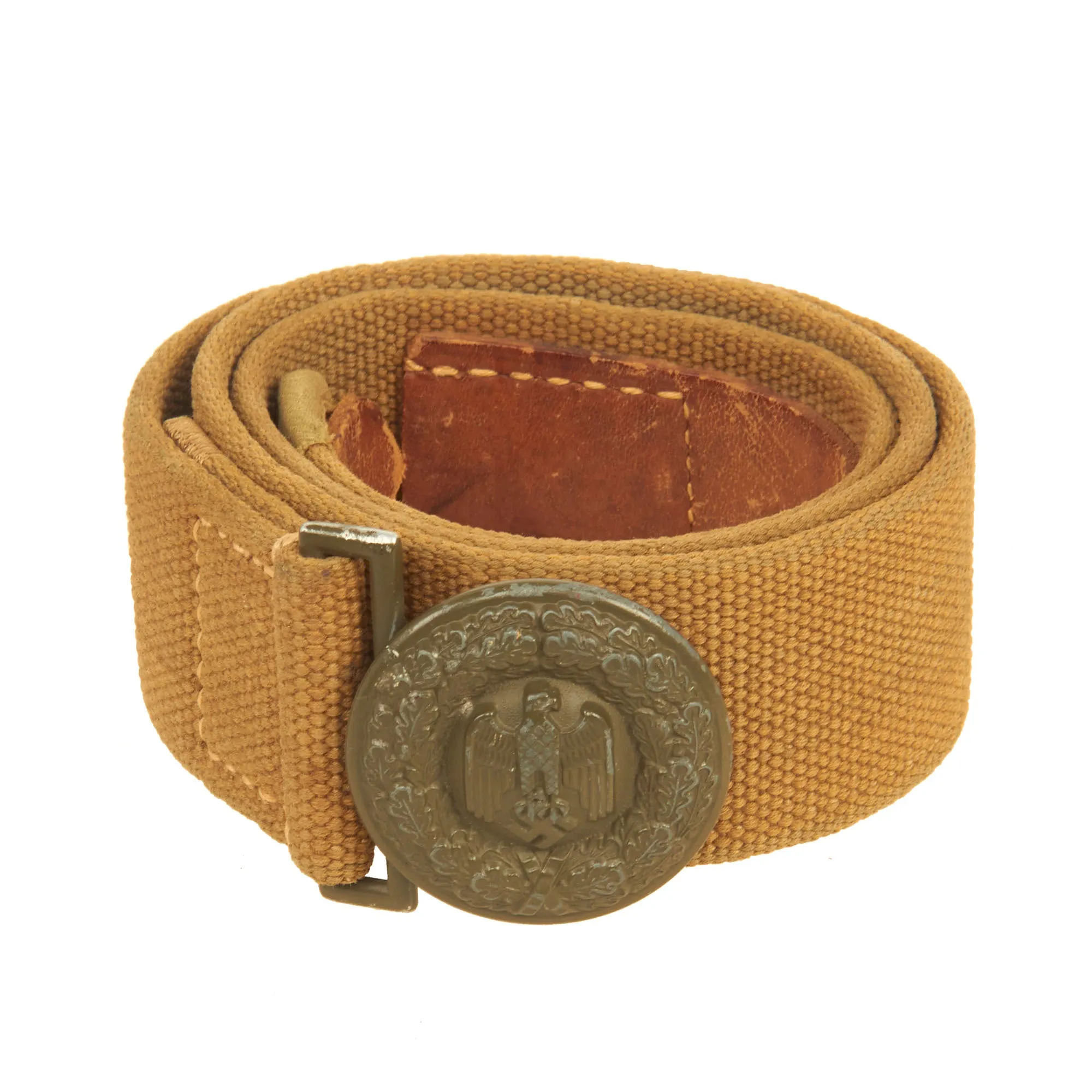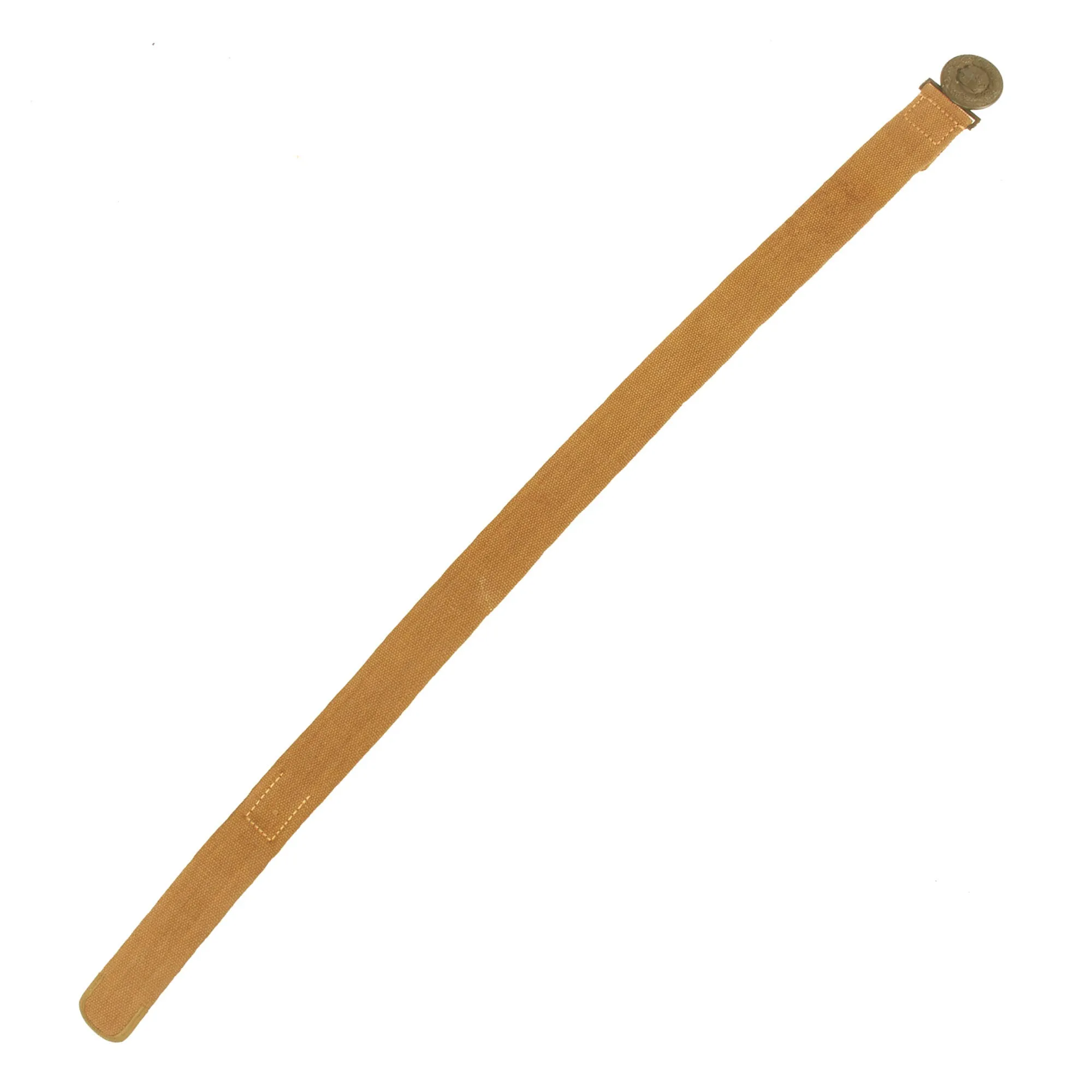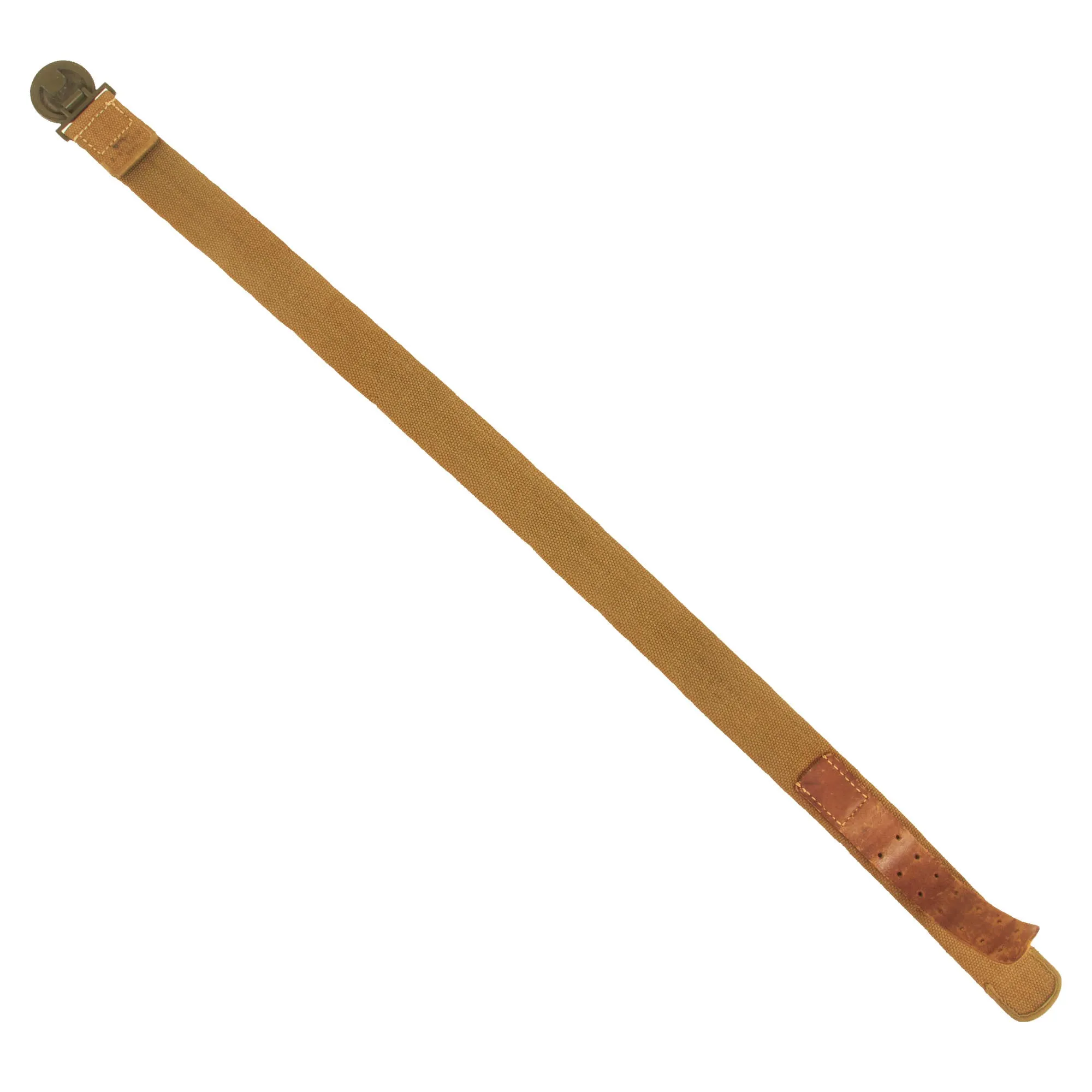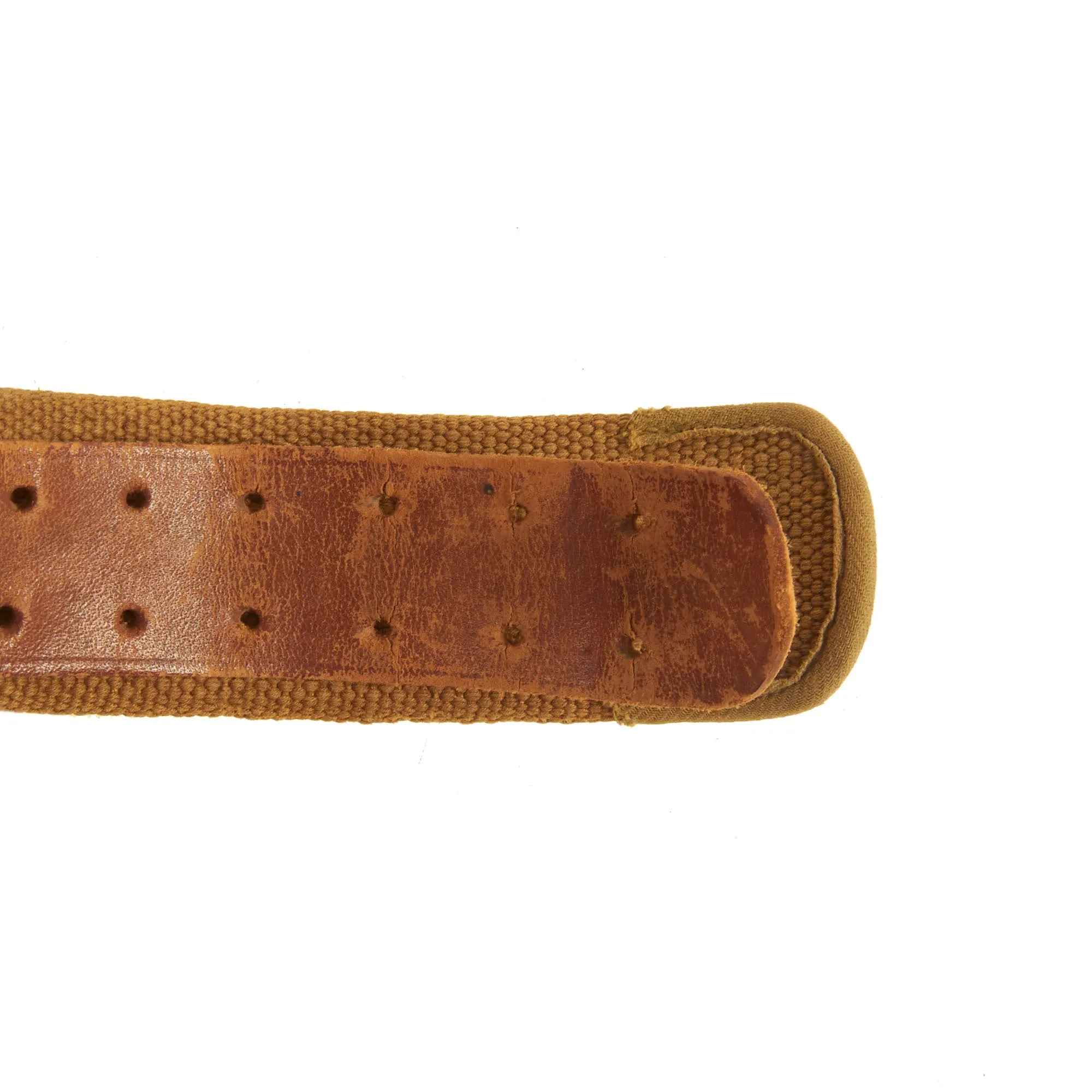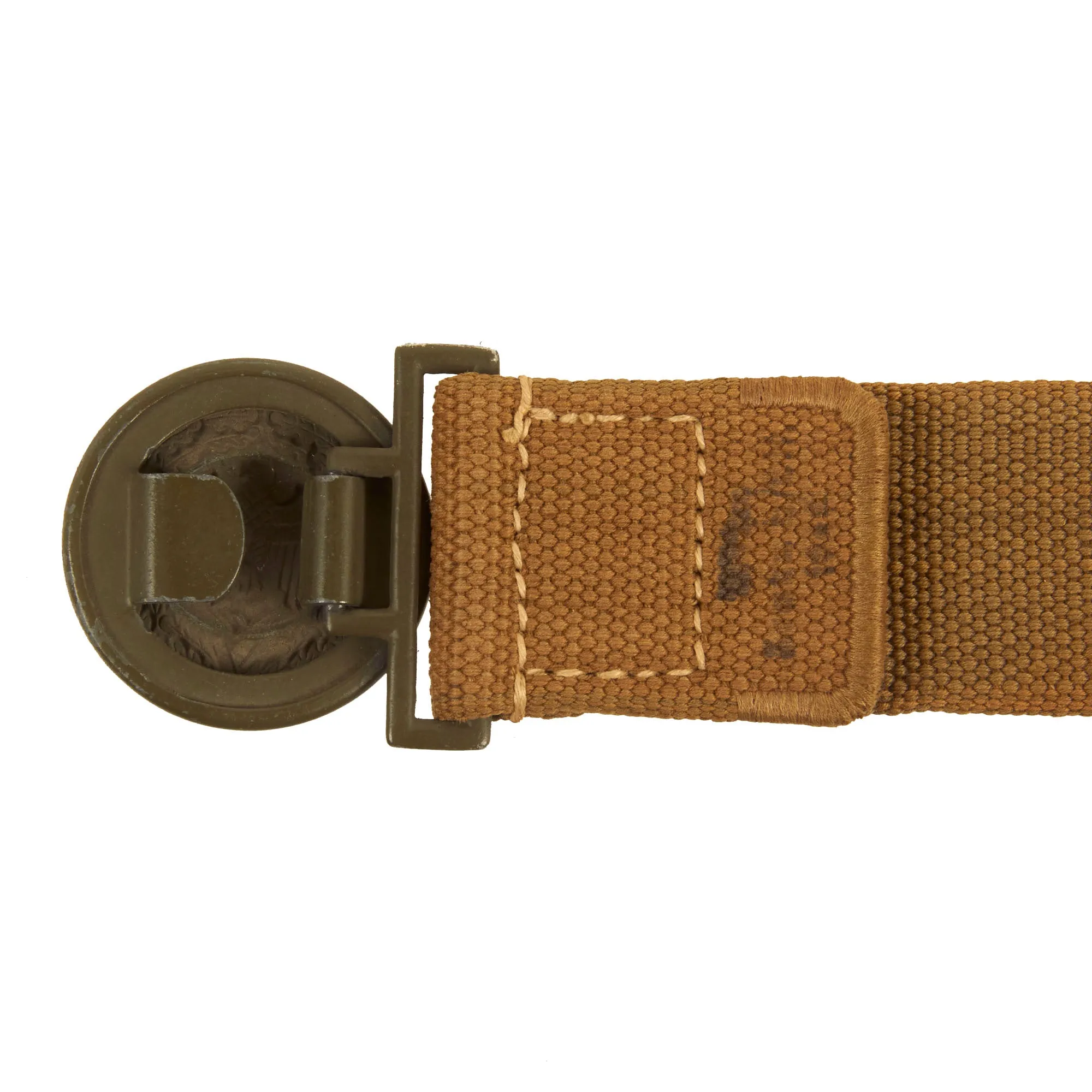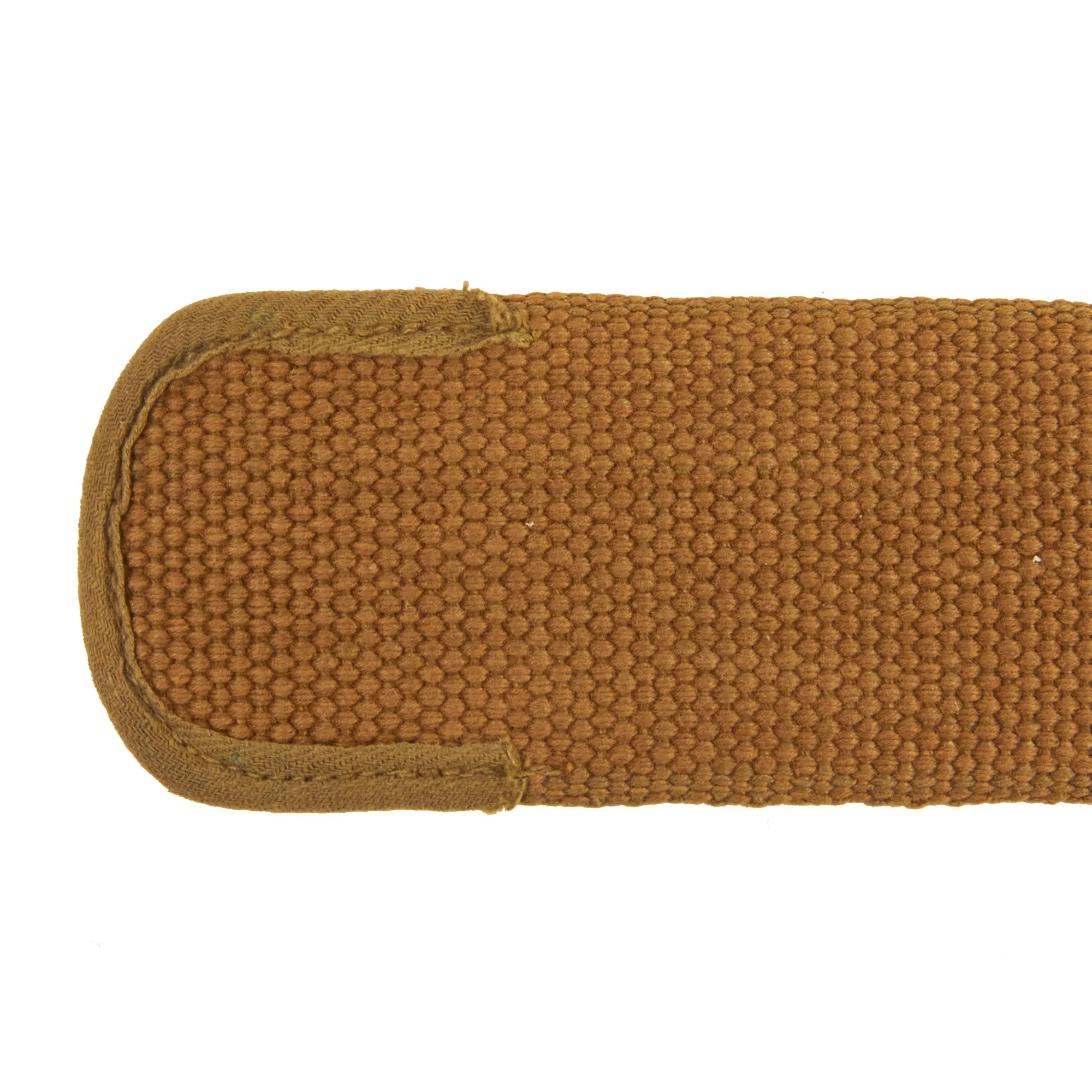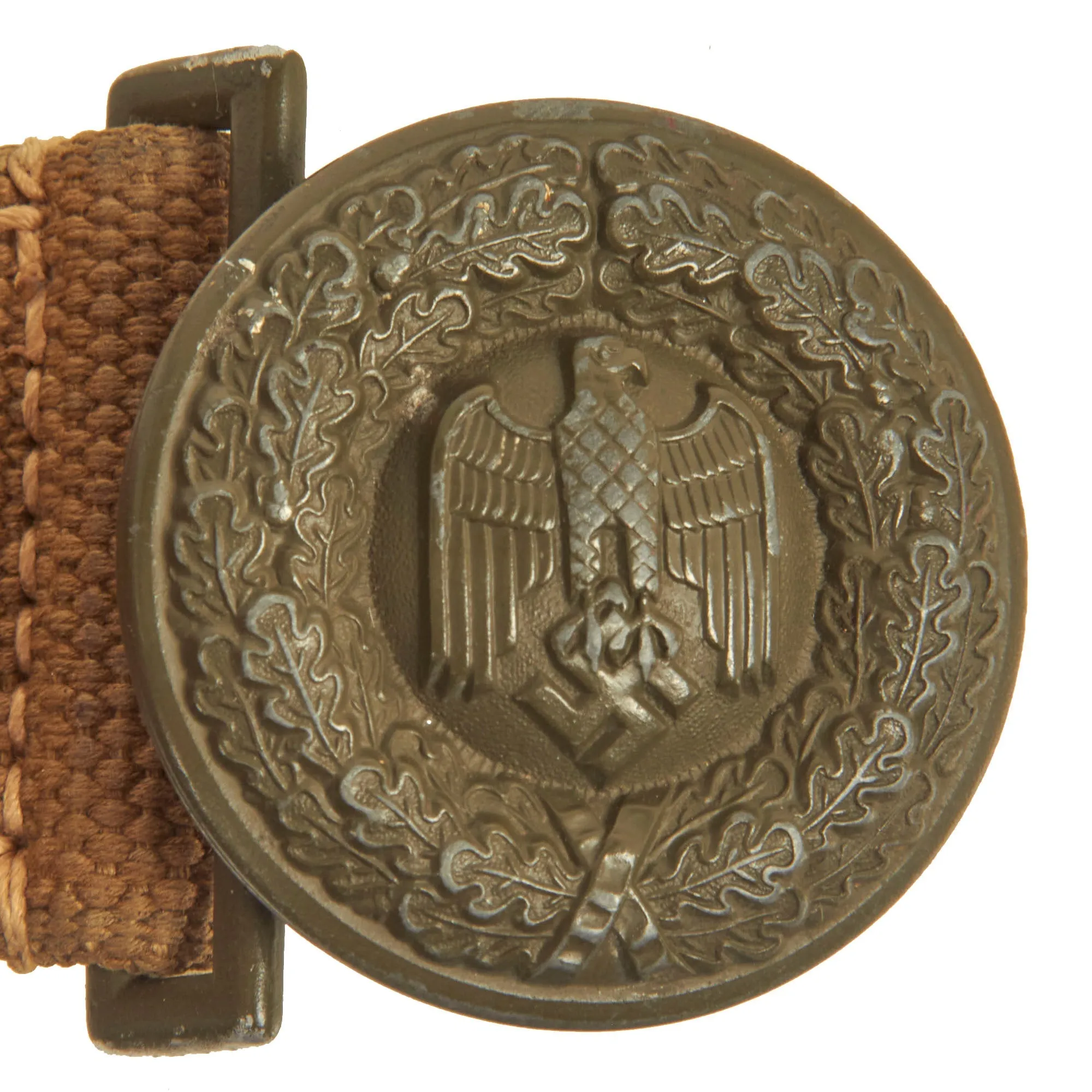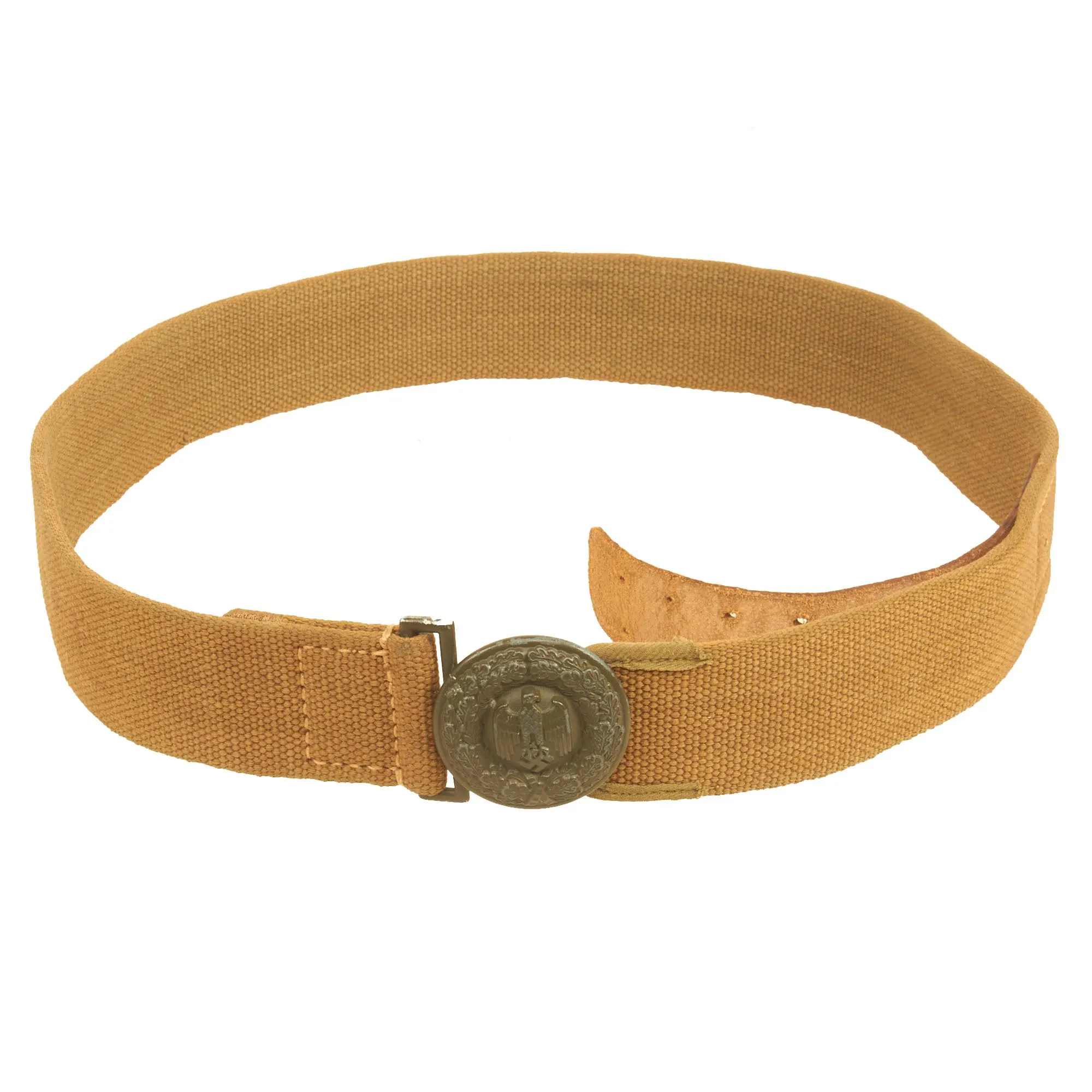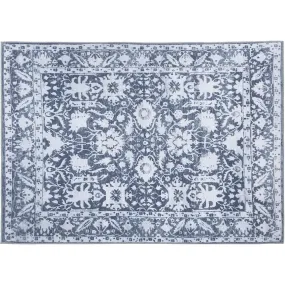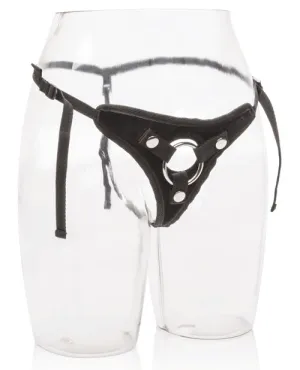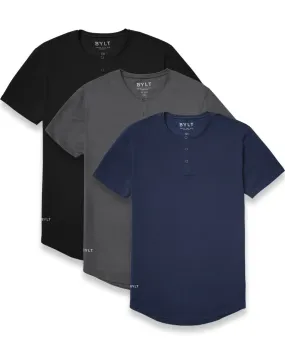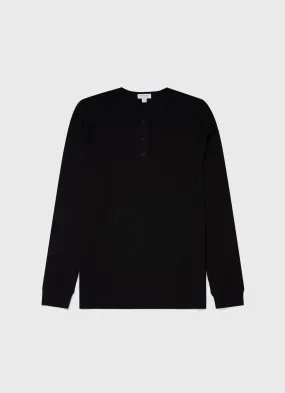Original Item: Only One Available. This is a very rare totally genuine WWII Heer Army Officer's Deutsches Afrikakorps (DAK) tropical waist belt with correct two piece Painted Zinc Alloy Belt Buckle (Koppelschloß). Traditionally officer's had worn an leather belt with an open pronged buckle, washed silver or gold depending on the rank. With the impeding invasion of Africa, a new "Tropical" pattern officer's field belt was introduced, based on the officer's parade / dress brocade belt. This design features a two piece round buckle, with a closed wing Heer Wehrmactadler in the center, surrounded by a thick triple oak leaf wreath. There were several different designs seen, a with the brocade belt.
This belt has the buckle permanently attached to the right side of the belt, intended to clip onto a movable loop on the other side, which was adjusted in size using the leather tab with seven double holes. This belt however is missing the adjustable side, as well as the web keepers, which were easily removable. It is however in great shape, with most of the paint still retained on the buckle. There is no maker mark on the buckle, but there is a faded one stamped onto the webbing of the buckle end.
The web belt itself measures approximately 36 1/2 inches long, with stitching on the loose buckle end, and a piece of fabric sewn over the leather tab end. There is just a bit of light wear and age toning, and this would really make a great display piece. This is the first example of an Officer's DAK belt that we have had, and they are definitely quite rare, even incomplete examples such as this.
A very good condition rare Army Officer's Tropical Field belt, ready to add to your collection and display!
History of the German Africa Corps
The Afrika Korps or German Africa Corps (Deutsches Afrikakorps or DAK) was the German expeditionary force in Africa during the North African Campaign of World War II. First sent as a holding force to shore up the Italian defense of their African colonies, the formation fought on in Africa, under various appellations, from March 1941 until its surrender in May 1943. The unit's best known commander was Field Marshal Erwin Rommel.
The dry climate of Africa proved to be an issue with much of the standard leather field gear that the German Army usually used. It would dry out and crack quickly, and become unusable. To deal with this, the standard field gear such as belts, Y-straps, A-frames, bayonet frogs, and other items, were issued in special tropical web versions.




